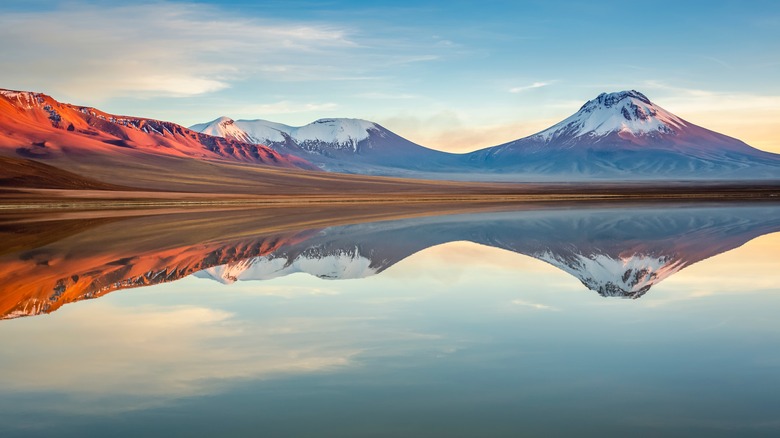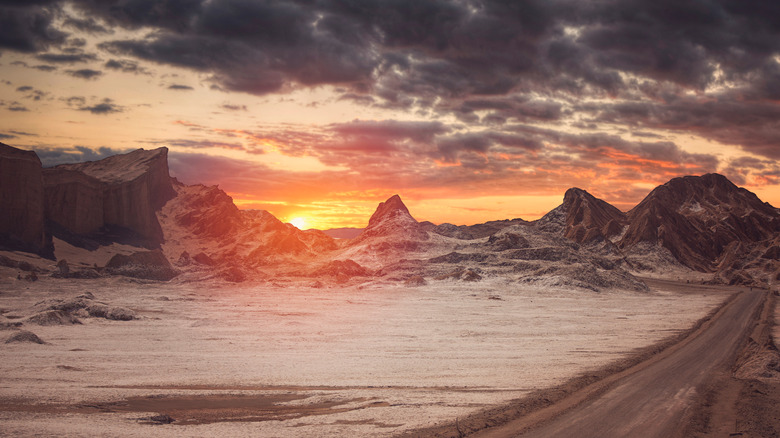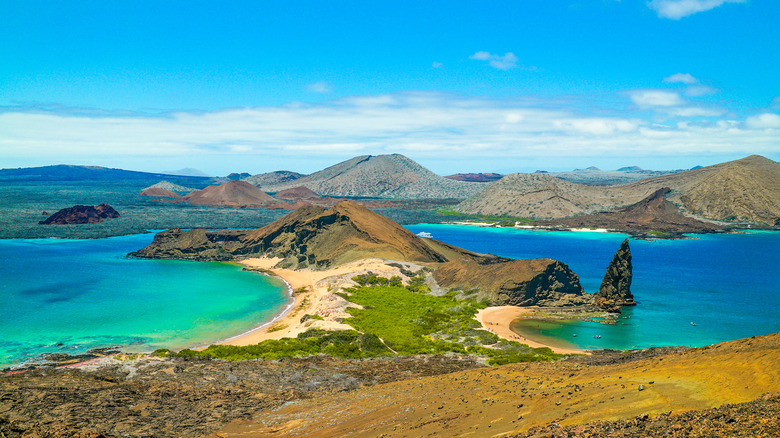These Two Popular Tourist Destinations Are The Top Filmed Locations In South America
On the cusp of the equator lies two of Hollywood's favorite exotic filming destinations. According to Net Credit, Chile's Atacama Desert and Ecuador's Galapagos Islands are South America's two most filmed locations. With diverse topographies and abundant flora and fauna across every biome, it's not hard to identify what attracts Hollywood to these remote regions. Film studios are not the only ones beckoned to the gorgeous climates of South America. The Galapagos Islands and the Atacama Desert remain popular getaways for a remote retreat.
From Patagonia's rain-washed forests and Chilean fjords to the coastal dunes of the Galapagos Islands, South America showcases abundant natural resources that have brought many of Hollywood's films to life. Nature documentaries showcasing the breathtaking landscapes and adventure films chronicling the lives of sailors lost at sea are just a few examples of movies shot in the South American wilderness. Both the Atacama Desert and Galapagos Islands share several characteristics that beckon filmmakers from around the globe. Unique topography, prime climate conditions, and efficient transportation systems provide a solid foundation for foreign film shoots.
Wander Chile's Atacama Desert
While Chile's Atacama Desert is, in fact, a desert, the arid dunes sit atop the same strip of coast as Patagonia's snow-capped glaciers and vegetative grasslands in the Mediterranean Forest. Chile's narrow, compact shape means the travel time between its diverse biomes is quick, giving filming studios abundant filming landscapes proximal to the desert. With cooler temperatures in the evening and little to no rainfall, the Atacama's climate conditions are perfect for long days shooting several scenes.
Chile also boasts impressive infrastructure. The country's pioneering technology scene gives filmmakers easy access to on-site studio facilities and additional crew members. Transporting advanced filming equipment from the United States into foreign countries requires an ATA Carnet customs document, which allows the importation of professional goods for commercial purposes. Chile is one of the only countries that accepts this document, likely due to its public film commission group. Chile Film Commission's goal is to promote the country as an unrivaled filming location by handling permit regulations, facilitating film requests, and maintaining a strong contact base with international studios.
Chile's stretch of coastline paralleling the Pacific has attracted dozens of brands in the automotive industry to base their commercial shoots on the paved byways. Unlike many other deserts that remain far-flung and desolate, the Atacama boasts an impressive transportation system with well-maintained highways, airline networks, and bus routes. Combining these benefits, it's no surprise that the Atacama Desert has provided the landscape for over 50 movies, including "Spy Kids," "Quantum of Solace," and "The Motorcycle Diaries."
Off the beaten path on Ecuador's Galapagos Islands
A UNESCO World Heritage Site, popular honeymoon trip, and thriving wilderness metropolis, the Galapagos Islands are another of Hollywood's favorite South American film sites. Located 600 miles off the coast of Ecuador, the biodiversity makes it a world-class icon to observe some of the globe's most exotic species of flora and fauna.
Filmmakers and voyagers alike are drawn to the island's golden coastlines, endemic species, and emerald groves, leading to countless nature documentaries starring the Galapagos's unique topography. With a host of exotic species making their homes along the island's shores and just off the coast, filmmakers can easily capture footage of animals found nowhere else on the planet. Other films include action and adventure movies like "Master and Commander" and "The Old Man and the Sea." Both films highlight nature as an essential part of the character's journeys, an element that would not have been possible without the footage gathered in the Galapagos.
Capturing the serene vistas and exotic wildlife does not come without its challenges. Conservation efforts resulted in the Ecuadorian government requiring issued permits to film in protected zones, a tedious process for many major production companies.


